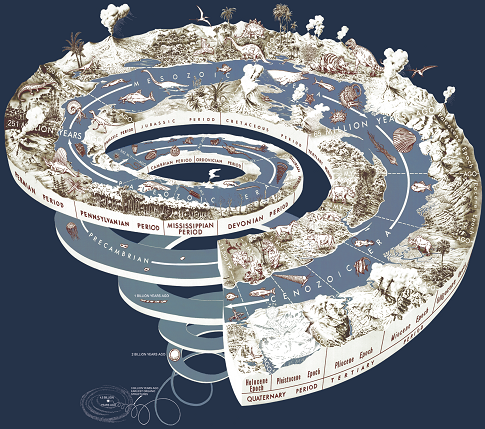
GEOLOGIC
TIME SCALES
The geologic time scale provides a system of chronologic measurement relating stratigraphy to time that is used by geologists, paleontologists and other earth scientists to describe the timing and relationships between events that have occurred during the history of the Earth.
Evidence from radiometric dating indicates that the Earth is about 4.570 billion years old. The geological or deep time of Earth’s past has been organized into various units according to events which took place in each period. Different spans of time on the time scale are usually delimited by major geological or paleontological events such as mass extinctions. For example, the boundary between the Cretaceous period and the Paleogene period is defined by the Cretaceous-Tertiary extinction event, which marked the demise of the dinosaurs and of many marine species. Older periods which predate the reliable fossil record are defined by absolute age.
- Relative time ("chronostratic") -- subdivisions of the Earth's geology in a specific order based upon relative age relationships (most commonly, vertical/stratigraphic position). These subdivisions are given names, most of which can be recognized globally, usually on the basis of fossils.
- Absolute time ("chronometric") -- numerical ages in "millions of years" or some other measurement. These are most commonly obtained via radiometric dating methods performed on appropriate rock types.
Terminology
The largest defined unit of time is the supereon, composed of eons. Eons are divided into eras, which are in turn divided into periods, epochs and ages. The terms eonothem, erathem, system, series, and stage are used to refer to the layers of rock that correspond to these periods of geologic time.
Geologic units from the same time but different parts of the
world often look different and contain different fossils, so the same period
was historically given different names in different locales. For example, in


